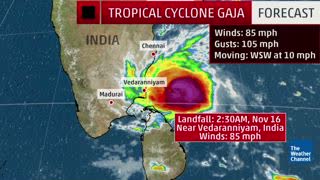7667766266
enquiry@shankarias.in
Why in news?
Recently, Cyclone Gaja made its landfall between Nagapattinam and Vedaranyam in Tamil Nadu.
How prepared was the State?

What were the impact and the State response?
What is the way ahead?
Source: The Hindu